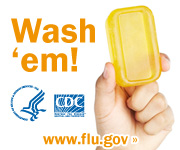 |
| Trout with coconut sauce |
The pun is deliberate. As lent has gotten under way, Catholics spend several weeks eating no meat (at least not from land or air) on Fridays and heading for the fish counter.
The problem is that many choices, at least at my supermarkets, can be bad for the oceans (and us) in the long run. Some species, including Chilean sea bass, are overfished to the point that their populations will not be able to sustain themselves if we continue to consume them at current rates. Other species, such as Atlantic salmon, may be farmed in ways that contaminate the environment, weaken wild populations through interbreeding and disease, or consume excessive amounts of smaller fish.
If you look at seafood guides from such organizations as Shedd Aquarium in Chicago, Monterey Bay Aquarium in California, Blue Ocean Institute in Cold Spring Harbor, N.Y., and Natural Resources Defense Council, based in New York City, it's easy to get overwhelmed. But they all seem to consistently name certain fish as bad choices. The ones I see most often where I live:
Atlantic salmon
Atlantic salmon in the wild is considered endangered by the U.S. Fish and Wildlife Service. Most Atlantic salmon sold to consumers is farmed in pens that are open to the ocean and release waste and parasites into the wild. Additionally, the Environmental Defense Fund warns of elevated levels of PCBs in farmed salmon. Instead of buying Atlantic salmon, choose wild Alaskan salmon. Alternatives to salmon include char and farmed rainbow trout.Chilean sea bass
Chilean sea bass, which is not a bass but a toothfish, is overfished and especially vulnerable because it takes a long time to reach reproductive age. Consumers need to beware elevated levels of mercury. The usual fishing methods damage the sea floor and can kill endangered albatross and other sea birds. Further, the overfishing of Chilean sea bass is implicated in the decline of a population of killer whales in the Ross Sea, off the coast of Antarctica. The Monterey Bay Aquarium suggests consumers look for Pacific halibut or sablefish (also called black cod). The Marine Stewardship Council, based in London, has certified a small Chilean sea bass fishery as sustainable, but I've never seen any offerings with the council's blue seal of approval.Eel (also sold as unagi)
Until very recently I ate Japanese style unagi because my local Asian food market sold frozen precooked unagi that was ready to eat after minutes of reheating. I didn't know that the overwhelming majority of eel sold is farmed in ways that threaten the wild population and send waste into the environment. So much for my uber-convenient meals. But there are other fish in the sea.Orange roughy
Orange roughy, sometimes called red roughy or deep sea perch, is very long-lived and can take 30 years to mature, meaning they often are caught before they've had a chance to reproduce. Populations are badly overfished according to many groups. As with Chilean sea bass, orange roughy can contain elevated levels of mercury.Others to avoid include shark, swordfish, blue fin tuna, red snapper, Atlantic cod, Atlantic halibut, Atlantic flounder and Atlantic sole.
As I've said, there are other fish in the sea, and the seafoods that most groups say are particularly good choices include U.S. farmed tilapia, U.S. farmed catfish, farmed rainbow trout, farmed Arctic char, wild-caught pink shrimp from Oregon, wild Alaskan salmon, dungeness and stone crabs, and farmed mussels, clams and oysters.
 |
| Salmon with coconut sauce |
Salmon (or Trout) With Coconut Sauce Recipe
Serves 4
INGREDIENTS
1 Tablespoon canola or peanut oil
1 pound wild Alaskan salmon* or farmed rainbow trout fillets
1 Tablespoon canola peanut oil
2 scallions, chopped
1 small to medium shallot, chopped
1 clove garlic, chopped
2 to 3 teaspoons green curry paste**
1 Tablespoon chopped ginger
1 Tablespoon chopped lemongrass
1 well-shaken can (13.5-ounce) coconut milk
1 Tabespoon fish sauce
1 roasted red bell pepper, chopped or cut into strips
DIRECTIONS
1. Heat oil in hot skillet, add fish and cook just until flesh flakes apart. (Time varies depending on thickness of fish.) Remove fish to plate and tent with foil.
2. Add oil to same pan used to cook fish. Saute scallions, shallot, garlic, curry, ginger and lemongrass until fragrant, about a minute. Add coconut milk and simmer until slightly thickened. Add fish sauce and red pepper. Serve with fish and brown jasmine rice. This goes well with Thai style cucumber salad.
NOTES:
*I prefer fresh fish, but I've done this dish with canned salmon too. Canned salmon is already cooked.
**Two teaspoons curry paste make the sauce mild because I serve this to toddlers. For your own taste, sample the sauce and adjust seasoning as needed.
For more information on seafood sustainability:
Shedd Aquarium's Right Bite wallet guide
Monterey Bay Aquarium's Seafood Watch program
Natural Resources Defense Council
Blue Ocean Institute's seafood guide
Greenpeace International Seafood Red List
World Wildlife Fund's international seafood guides
Related news:
Costco Wholesale Corp., in its seafood policy updated last month, said it will stop selling "certain wild species that have been nearly universally identified as at great risk." Those include Atlantic cod; Atlantic halibut; Chilean sea bass; Greenland halibut; grouper; monkfish; orange roughy; redfish; shark; skates and rays; swordfish; and bluefin tuna. Costco said it won't resume sales unless sources are certified as sustainable by the Marine Stewardship Council (MSC). The move followed a highly public campaign by Greenpeace last year.
A California bill would ban the sale and possession of shark fins.



